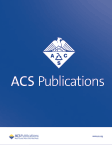摘要 PO5-04-05:通过单细胞基因组学ERBB2(HER2)扩增测定对转移性组织活检中HER2状态匹配的患者循环肿瘤细胞(CTCs)中ERBB2状态一致性的临床验证
IF 3.4
Q2 PUBLIC, ENVIRONMENTAL & OCCUPATIONAL HEALTH
引用次数: 0
摘要
背景 液体活检是一种检测 CTC 的非侵入性诊断方法,当传统活检不可行时,CTC 可为转移性乳腺癌 (MBC) 患者的治疗决策提供临床可行信息。基于血液的液体活检具有潜在的优势,它可以对转移性肿瘤克隆进行广泛采样,因为它能够并有可能从不止一个转移部位获得细胞和基因组信息。在此,我们报告了通过单细胞 CTC 基因组学 ERBB2(HER2)扩增对转移组织活检中 HER2 状态匹配的患者进行 HER2 阳性检测的一致性。方法 在美国 25 个不同的癌症中心开展了 CTC ERBB2 (HER2) 检测前瞻性临床经验计划,招募了 128 名在过去 5 年中进行了有据可查的标准护理转移性组织活检的 MBC 患者(从组织活检到液体活检的天数,中位数:19.5 天;四分位数:10 天):中位数:19.5;四分位数间距:40.75):从血浆中分离出在各临床部位采集的 CTCs,将有核细胞培养,并在 CAP CLIA 实验室对切片进行生物保存,以便进行免疫荧光染色和后续成像。使用 Epic Sciences 数字成像和机器学习算法识别 CTC。对单个 CTC 进行测序,以便对染色体不稳定性(LST)和 ERBB2(HER2)扩增进行基因组量化。结果 在 128 例 MBC 患者的临床验证队列中,根据标准病理学标准(IHC 3+ 或 IHC2+/ISH+),30%(38/128)的转移性组织活检呈 HER2 阳性。在染色体不稳定的 CTC ERBB2(HER2)扩增可报告结果的 128 个病例中,有 64 个病例的 31% 患者(20/64)存在 ERBB2 扩增。CTC 单细胞基因组学和现有组织结果显示 HER2 阳性的灵敏度为 69%,特异性为 78%。然后,我们研究了两个已知的生物混杂因素对使用组织活检确定 HER2 状态的影响:1)对骨转移灶进行组织活检;2)随着时间的推移,治疗压力导致肿瘤演变,从而导致潜在的 HER2 转换和肿瘤异质性。因此,我们进行了亚组分析,只包括在非骨组织上进行组织活检的验证组患者,结果显示与组织比较者的一致性略有提高,灵敏度为 86%,特异度为 75%。接下来,为了排除肿瘤演变的可能性,我们只选择了与非骨组织活检的 HER2 状态比较者同时进行活检的患者(从组织活检到液体活检的天数,中位数:14 天;四分位数范围:10 天):中位数:14;四分位数间距:22)抽血进行 CTC ERBB2 (HER2) 扩增检测。这大大提高了一致性,灵敏度为 100%,特异度为 75%。结论 血液和组织是两种生物学上截然不同的样本类型,由于分析方法、时间和临床差异,HER2 和其他生物标记物的检测结果可能会出现差异。这些数据表明,通过单细胞基因组ERBB2(HER2)扩增检测确定HER2状态有助于临床评估无法或无法通过组织活检确定HER2状态的转移性乳腺癌(MBC)患者的ERBB2状态。此外,这些结果还证明了转移性活检的部位(骨)差异和肿瘤演变对 CTC ERBB2 (HER2) 检测与肿瘤活检之间的不一致性的影响。引用格式:朱塞佩-迪卡洛、欧内斯特-林、梅根-斯莱德、黄曙光、里克-温斯特鲁普、李-施瓦茨伯格。通过单细胞基因组学ERBB2(HER2)扩增测定对转移组织活检中HER2状态匹配的患者循环肿瘤细胞(CTCs)中ERBB2状态一致性的临床验证[摘要]。在2023 年圣安东尼奥乳腺癌研讨会论文集;2023 年 12 月 5-9 日;德克萨斯州圣安东尼奥。费城(宾夕法尼亚州):AACR; Cancer Res 2024;84(9 Suppl):Abstract nr PO5-04-05。本文章由计算机程序翻译,如有差异,请以英文原文为准。
Abstract PO5-04-05: Clinical validation of the concordance performance of ERBB2 status by single-cells genomics ERBB2 (HER2) amplification Assay in Circulating Tumor Cells (CTCs) from patients with matched HER2 status from metastatic tissue biopsies
Background
Liquid biopsies are a non-invasive diagnostic approach for detecting CTCs that may provide clinically actionable information for treatment decisions for metastatic breast cancer (MBC) patients when a conventional biopsy is infeasible. Blood-based liquid biopsy has the potential advantage that it allows broad sampling of metastatic tumor clones because it is capable of and likely to obtain cellular and genomic contributions from more than one metastatic site. Here we report the concordance performance of HER2 positivity by single-cell CTC genomics ERBB2 (HER2) amplification in patients with matched HER2 status from metastatic tissue biopsies.
Methods
A prospective Clinical Experience Program for CTC ERBB2 (HER2) Assay across 25 different United States-based cancer centers, was used to recruit 128 MBC patients with documented standard-of-care metastatic tissue biopsies performed within the last 5 years (Days from tissue biopsy to liquid biopsy, Median: 19.5; interquartile range: 40.75) CTCs from blood collection at each respective clinical site were isolated from plasma, nucleated cells were plated, & slides were bio-banked for Immunofluorescent staining & subsequent imaging in a CAP CLIA lab. CTCs were identified using Epic Sciences digital imaging & machine learning algorithms. Individual CTCs were sequenced for genomic quantification of chromosomal instability (LSTs) and ERBB2 (HER2) amplification.
Results
Within the clinical validation cohort of 128 MBC patients, 30% (38/128) were HER2-positive by standard pathologic criteria (IHC 3+ or IHC2+/ISH+) in metastatic tissue biopsies. Among the 64 out of 128 cases with reportable results by the CTC ERBB2 (HER2) amplification on chromosomally unstable CTCs, 31% (20/64) of patients had ERBB2 amplification. Concordance between CTC single cell genomics and available tissue results for HER2 positivity showed a sensitivity of 69% and specificity of 78%. We then addressed the effects of two known biological confounders to the use of tissue biopsy for HER2 status determination: 1) tissue biopsies performed on bone metastases, 2) tumor evolution driven by treatment pressure over time leading to potential HER2 conversion and tumor heterogeneity. Thus, we performed subgroup analysis including only validation set patients with tissue biopsies performed on non-bone tissues, which showed slightly improved concordance to the tissue comparator with a Sensitivity of 86%, and Specificity of 75%. Next, to exclude the possibility of tumor evolution we selected only patients with the HER2 status comparator performed on non-bone tissue biopsies contemporaneous (Days from tissue biopsy to liquid biopsy, Median: 14; interquartile range: 22) to the blood draw for the CTC ERBB2 (HER2) amplification assay. This showed dramatically improved concordance performance with a Sensitivity of 100%, and a Specificity of 75%.
Conclusions
Blood and tissue are two biologically distinct sample types where variations in HER2 and other biomarker results might be expected due to analytic, temporal and clinical differences. These data indicate that determination of HER2 status by single cell genomic ERBB2 (HER2) amplification assay can aid in the clinical assessment of ERBB2 status in patients with metastatic breast cancer (MBC) for whom tissue biopsy for HER2 status is not available, or infeasible. Additionally, these results provide evidence of the contribution of site differences (bone) of metastatic biopsies and also tumor evolution to discordance between the CTC ERBB2 (HER2) Assay and tumor biopsy.
Citation Format: Giuseppe Di Caro, Ernest Lam, Megan Slade, Shuguang Huang, Rick Wenstrup, Lee Schwartzberg. Clinical validation of the concordance performance of ERBB2 status by single-cells genomics ERBB2 (HER2) amplification Assay in Circulating Tumor Cells (CTCs) from patients with matched HER2 status from metastatic tissue biopsies [abstract]. In: Proceedings of the 2023 San Antonio Breast Cancer Symposium; 2023 Dec 5-9; San Antonio, TX. Philadelphia (PA): AACR; Cancer Res 2024;84(9 Suppl):Abstract nr PO5-04-05.
求助全文
通过发布文献求助,成功后即可免费获取论文全文。
去求助
来源期刊

ACS Chemical Health & Safety
PUBLIC, ENVIRONMENTAL & OCCUPATIONAL HEALTH-
CiteScore
3.10
自引率
20.00%
发文量
63
期刊介绍:
The Journal of Chemical Health and Safety focuses on news, information, and ideas relating to issues and advances in chemical health and safety. The Journal of Chemical Health and Safety covers up-to-the minute, in-depth views of safety issues ranging from OSHA and EPA regulations to the safe handling of hazardous waste, from the latest innovations in effective chemical hygiene practices to the courts'' most recent rulings on safety-related lawsuits. The Journal of Chemical Health and Safety presents real-world information that health, safety and environmental professionals and others responsible for the safety of their workplaces can put to use right away, identifying potential and developing safety concerns before they do real harm.
 求助内容:
求助内容: 应助结果提醒方式:
应助结果提醒方式:


